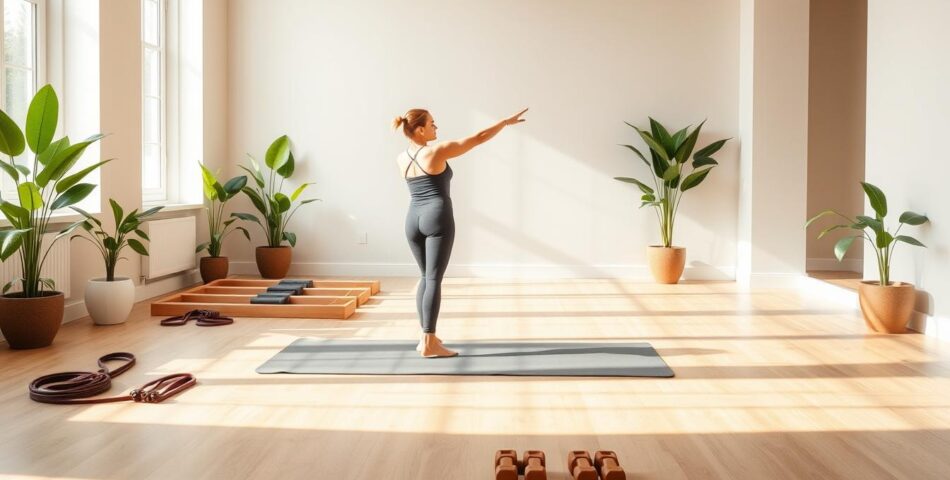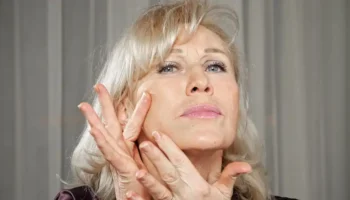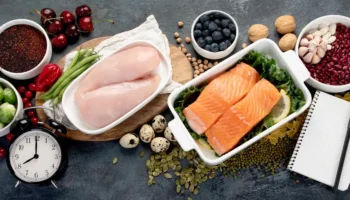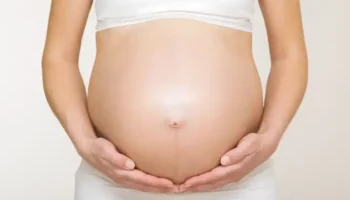As I entered my 40s, I started feeling little aches and pains that weren’t there before—especially in my back. Long hours sitting at a desk and everyday stress took a toll, and I knew I needed something that would strengthen my body without putting too much strain on my joints. That’s when I truly committed to Pilates workouts at home, and it changed everything.
Not only did Pilates ease my back pain, but it also improved my posture, boosted my energy levels, and made me feel stronger and more confident in my body. Now, I make Pilates a core part of my fitness routine, mixing it with strength training and occasional studio sessions when I have time. If you’re in your 40s (or beyond) and looking for a sustainable, science-backed way to stay fit, flexible, and pain-free, let me share why Pilates for beginners is a game-changer—especially during perimenopause and beyond.
Why Pilates Is Perfect for Women Over 40
Our bodies naturally go through changes in our 40s—our metabolism slows down, we start losing muscle mass, and flexibility decreases. Add hormonal shifts from perimenopause, and it’s easy to feel like everything is working against us.
But here’s the good news: research shows that Pilates helps counteract these effects by improving core strength, flexibility, balance, and overall body awareness. A 2017 study published in the Journal of Aging and Physical Activity found that women over 40 who practiced Pilates regularly had improved muscle strength, flexibility, and posture compared to those who didn’t.
So, if you’re experiencing stiffness, aches, or just want a low-impact yet effective workout, Pilates is one of the best forms of exercise for longevity and vitality.
The Science-Backed Benefits of Pilates for Women 40+
1. Eases Back Pain & Strengthens Core Muscles
When I first started doing Pilates workouts at home, my main goal was to relieve my back pain. Sitting for long hours had weakened my core, and I didn’t realize how much this contributed to my discomfort.
Pilates focuses on deep core activation, meaning you strengthen the muscles that support your spine. According to a 2019 study in Physical Therapy in Sport, participants with chronic low back pain experienced significant pain relief after just six weeks of Pilates training.
I personally noticed improvements within a few weeks—less stiffness in the mornings, better posture, and fewer aches after long days. If back pain is an issue for you, I highly recommend starting with wall Pilates workouts or Pilates reformer exercises, which provide extra support while you build strength.
2. Supports Bone Health & Prevents Osteoporosis
As women, we start losing bone density in our 40s, which increases the risk of osteoporosis. High-impact exercises (like running) can sometimes do more harm than good for aging joints.
Pilates, however, is gentle yet weight-bearing, which makes it ideal for improving bone strength without excessive strain. Studies published in Clinical Interventions in Aging show that Pilates can improve bone mineral density, especially in postmenopausal women.
By incorporating Pilates for beginners into your weekly routine, you’re not just staying active—you’re actively protecting your bones from future fractures and weaknesses.
3. Enhances Flexibility & Joint Mobility
I used to think that flexibility was something you either had or you didn’t. But after doing Pilates consistently, I realized it’s something you can absolutely improve—at any age.
Pilates movements involve dynamic stretching, which lengthens and strengthens muscles simultaneously. A study in the Journal of Bodywork and Movement Therapies found that women over 40 who practiced Pilates had greater joint mobility and flexibility compared to those who did traditional stretching exercises.
What I love most is that I no longer feel stiff getting out of bed or after sitting too long. Even if you’re new to it, Pilates for beginners focuses on slow, controlled movements that are safe and effective for tight muscles.
4. Boosts Metabolism & Helps with Weight Management
One thing I noticed in my 40s? My metabolism slowed down. Suddenly, the workouts that kept me in shape in my 30s weren’t working as well.
Pilates helps with this in two key ways:
✅ Builds lean muscle – The more muscle you have, the more calories you burn at rest.
✅ Engages deep stabilizing muscles – This boosts overall calorie burn and supports long-term weight management.
According to research in the Journal of Exercise Rehabilitation, regular Pilates training can significantly reduce body fat and improve lean muscle mass. Plus, since it’s low-impact, it’s easy to stay consistent with it long-term.
5. Reduces Stress & Supports Mental Well-Being
Let’s be real—our 40s come with a lot of stress. Between careers, family, and life changes, it’s easy to feel overwhelmed.
One of the unexpected benefits I found with Pilates workouts at home was how calming it is. The focus on breath control, slow movements, and mindfulness helps lower cortisol levels (the stress hormone). A 2020 study in Frontiers in Psychology found that women practicing Pilates reported lower stress levels, improved mood, and better sleep quality.
If you’re struggling with stress or anxiety, adding even 10 minutes of Pilates a day can make a noticeable difference in your mindset.
How I Mix My Pilates Routine
Pilates is a big part of my weekly fitness routine, but I also believe in balance and variety. Here’s how I incorporate different types of Pilates and strength training:
✅ Pilates workouts at home – I do wall Pilates workouts when I need extra support and mat Pilates for flexibility and core strength.
✅ Pilates reformer sessions – When I have time, I go to a studio to use the Pilates reformer, which adds resistance and helps with deeper muscle activation.
✅ Strength training – I combine strength training with Pilates because building muscle is essential for metabolism and bone health.
✅ Flexibility & recovery – I always include stretching and mindful breathing after Pilates to enhance recovery.
This mix keeps my workouts fun, effective, and sustainable—something I can keep doing well into my 50s and beyond.
Final Thoughts: Why Pilates Is a Lifelong Investment in Your Health
I truly believe that Pilates is one of the best things you can do for your body in your 40s and beyond. It’s not just about fitness—it’s about feeling strong, pain-free, and confident in your own skin.
If you’ve been struggling with back pain, stiffness, or just want a workout that makes you feel good, I encourage you to give Pilates workouts at home a try. Start small, stay consistent, and I promise—you’ll feel the difference.
Now, I’d love to hear from you!
Have you tried Pilates? What benefits have you noticed? Let’s chat in the comments!







